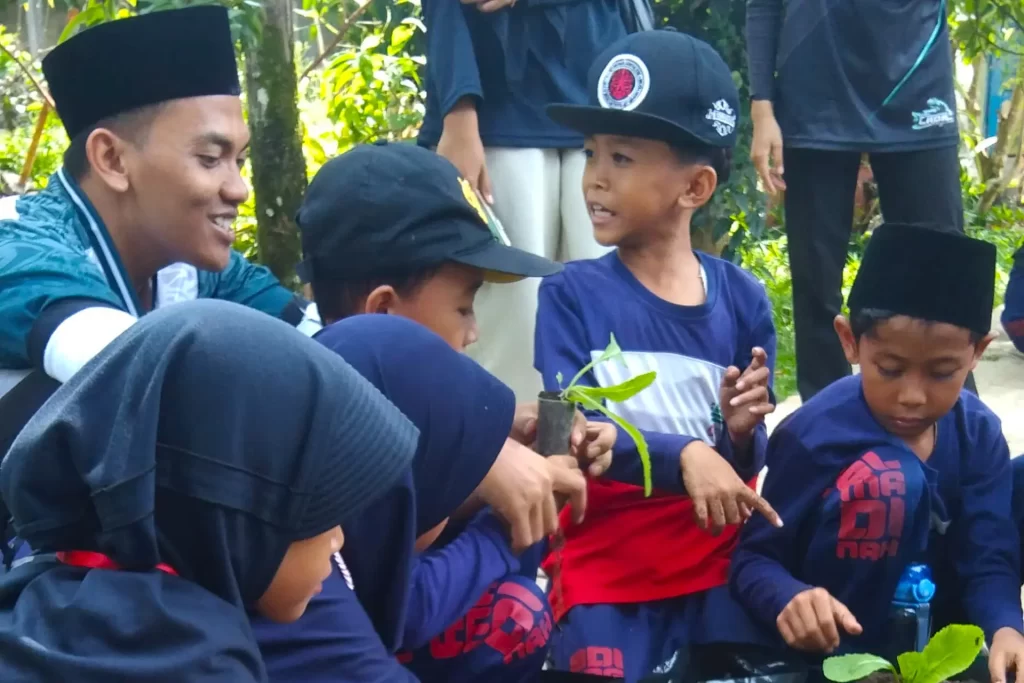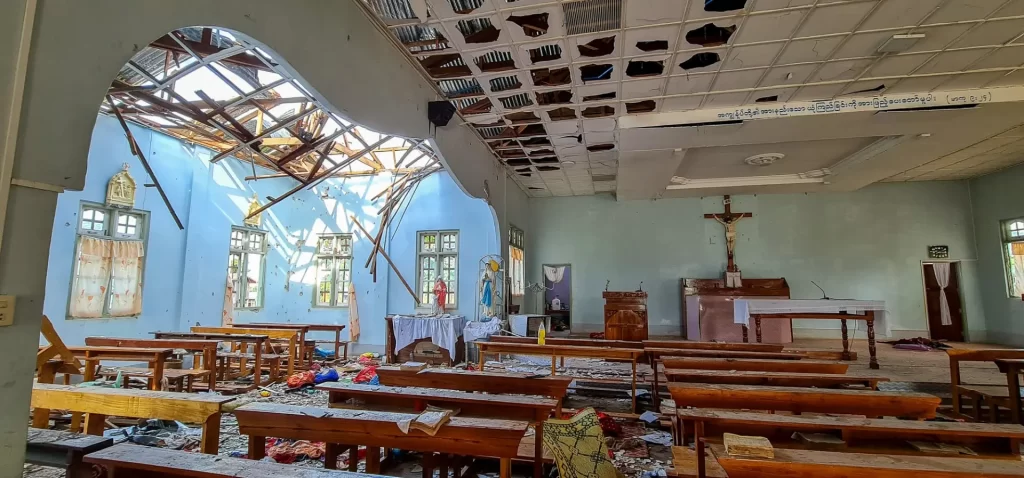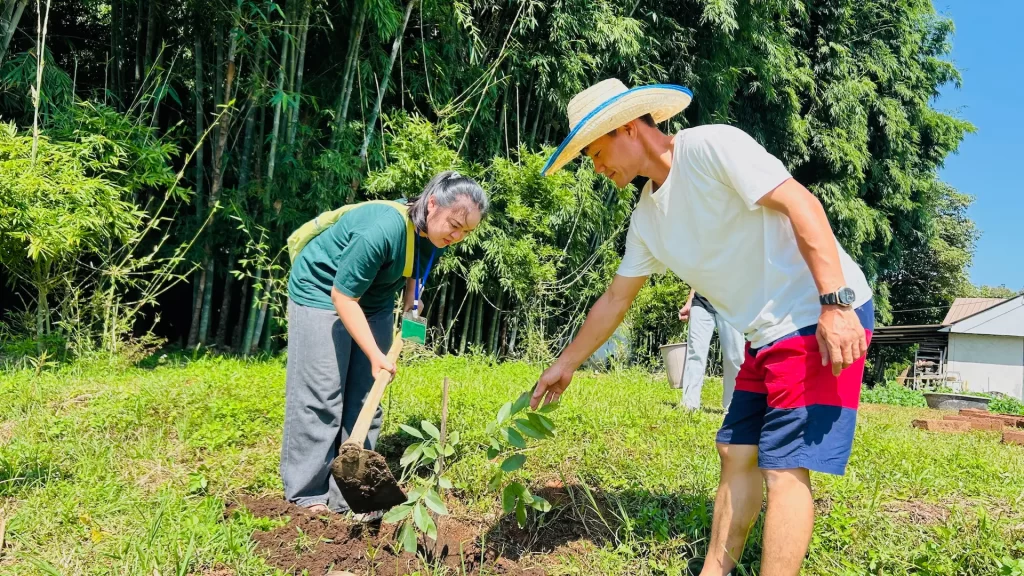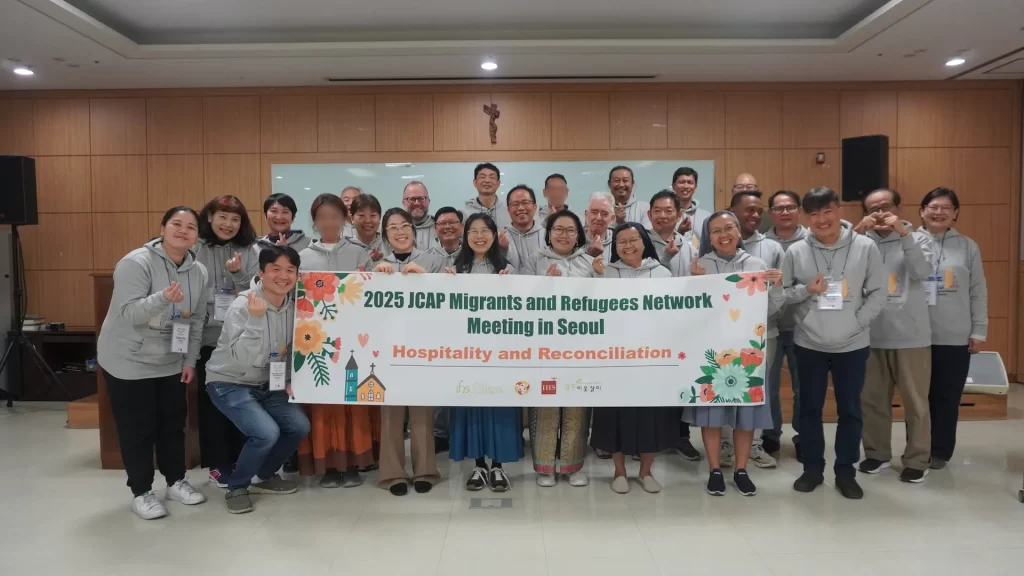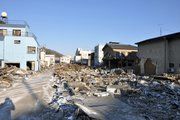
We called ourselves the Tokyo 12. I found myself among this group of five men and seven women who responded to Mr Sakagawa’s call to help in the Caritas Japan relief efforts. We did not know each other prior to this trip and had met only once for an orientation meeting April 4. Bony James, an Indian Jesuit scholastic, and I were probably the only Christians in this group.
Tokyo 12 left for the Northern coastal town of Kamaishi on April 5. Kamaishi is one of the towns that was badly hit by the tsunami. This is the town where a huge ship rammed into the tsunami wall. The sidewalks were still full of debris—everything from old toys to the remains of a baby shark.
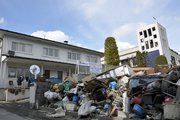
Upon arrival, we were briefed about the types of work involved – first, to clean up nearby houses that were devastated by the tsunami; second, to help in the sorting and distribution of relief goods; third, to assist in the preparation of food for those affected by the disaster.
The clean-up operations were gruelling and rather dangerous. Volunteers had to clear up debris in and around the house —thick wooden planks, car parts, waterlogged containers, even a heavy stairwell that the tsunami water had tossed onto the lawn. The debris was at times several metres deep, and we had to dig through the wreckage with a shovel or our hands in order to move the rubble to a nearby lot. There was so much debris that we had to create a makeshift pathway out of disposed tatami mats so as to be able to dump the debris further inside the lot. The dumpsite reeked of things that the tsunami had flung into the city.

One day, we worked on the house of an eighty-year old woman. Hanging on to the ledge of the house, we tried to empty the house of debris via a window so that we could gain access to the door and be able to open it from the inside. After a few hours, we took a break and I was able to have a chat with the woman. When she found out I was Filipino, her facial expression changed. I could not completely understand what she was saying, but I felt her gratitude. She even gave us Philippine Cavendish bananas for a snack!
After a long day’s work one evening, as I was cleaning my soiled overalls, a religious sister asked me if I was exhausted from all the heavy labour. I replied that although the work was by no means easy, I realised that as a volunteer I had an option to rest a while and after a week, I would be resting comfortably in the scholasticate. For many in the town, there was no other option—this ravaged town was their only home.
Another assignment I was given was to work in the central repository for donations of clothing. Truck after truck would come bringing donations from all over Japan. The warehouse was an abandoned school. The wooden floors creaked as we moved the boxes from one hallway to the other. At times we would have fun and push the boxes towards each other as one would a hockey puck. We would dispose of old clothing and sort and classify the new clothing received. We sorted them by gender and size to help the soldiers distributing the clothing to find the right items faster.
A retired fireman supervised us. Like the old woman, he expressed pleasant surprise that I am from the Philippines, and even more surprised that I had only been in Japan for less than two weeks. During our breaks, he would offer us hot ramen and cold barley tea and tell stories about the tsunami.
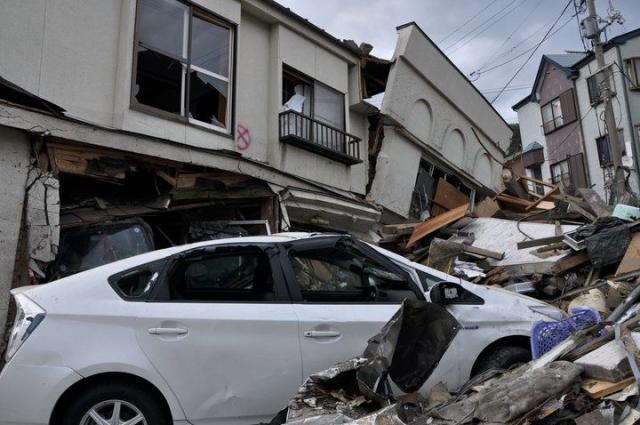
The atmosphere in Kamaishi despite the certain and slow clearing of debris was still quite tense. One Thursday evening, at around 11:00 am, a strong earthquake struck the region. The power went out and people started rushing outside their homes. Our team leader, Rintaro Takesue, did a head count and we proceeded to an elevated plateau overlooking the sea. The neighbourhood made sure everyone was there. Many people were scrambling to go up and helping others to do so. A ninety-year-old man had difficulty walking uphill, and someone was pushing up the wheelchair of an old woman, children in tow.
A fire engine beamed a light towards the black ocean as we listened for updates as to when the tsunami will strike. The faces of people were full of anxiety. Some volunteers broke down, and cried. I called the scholasticate in Tokyo to ask them to tell someone in the Philippine Province that I was safe.
The following day, the power was still out, and people were still uneasy. However, we continued to work. The convent house had just received its share of donations from Caritas Japan and had opened the house to anyone in the neighbourhood who needed anything.
To ease my tension, I arranged the food donations on display shelves as one would do in a supermarket, earning me the nickname “Mitsukoshi”, a popular department store chain in Japan. It was such a joy when I saw a young girl of around 5 years of age pointing to a candy display I had strategically placed on a low shelf. She asked her mother for permission to take some sweets and placed them in their bag.
My father had once told me that after a typhoon he, as a child, would anticipate hearing the sound of a broom’s bristles brushing against the wet pavement. He said that he always associates the sound with hope. It is a sound that tells him that people have begun to pick up the pieces after devastation. It tells him that people have decided to hope again and move on.
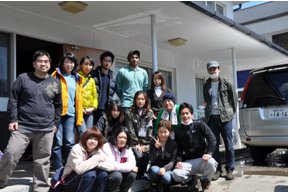
These are just some of the many stories of moving on that are now woven into the lives of the Tokyo 12 volunteers. Many of the other volunteers asked me questions about the faith, and questions about life. Although we may not fully be able to make sense of such a tragedy, we sense that somehow through our being there, we have been instruments of hope. Perhaps although coming from different faiths, we as volunteers, as we dare to hope in such a time of uncertainty, we perhaps unknowingly and imperfectly reflect and resound God’s greater hope.
(1 Corinthians 13:12) Now we see in a mirror dimly, but then face to face.
Sch Edward Joseph “Jody” Magtoto (PHI), 16 April 2011
Photos by Rintaro Takesue
http://www.facebook.com/notes/jody-magtoto-sj/the-sound-of-hope/10150156999323316



